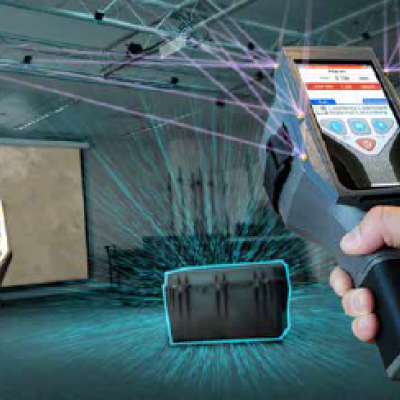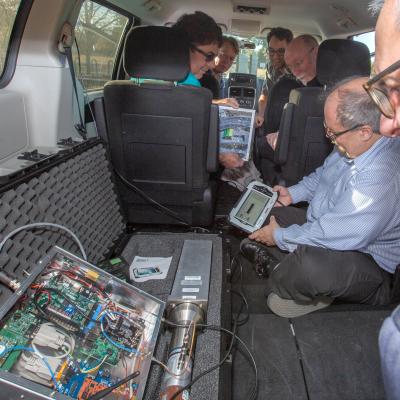This invention takes advantage of the high water-solubility of key NIF KDP crystal optics and uses water as an etchant to remove surface defects and improve the laser induced damage threshold. Since pure water etches KDP too fast, this invention is to disperse water as nanosized droplets in a water-in-oil micro-emulsion. While in a stable micro-emulsion form, the surfactant additives prevent…
Keywords
- Show all (53)
- Sensors (15)
- Compact Space Telescopes (5)
- Laser Materials Processing (5)
- Diode Lasers (4)
- Ground Penetrating Radar (4)
- Defense Technologies (3)
- Optical Damage Mitigation (3)
- RF Photonics (3)
- Additively Manufactured (AM) Optics (1)
- Imaging Systems (1)
- Manufacturing Simulation (1)
- Precision Engineering (1)
- Spectrometers (1)
- Ultrashort Pulse Lasers (1)
- (-) Precision Optical Finishing (3)
- (-) National Security Forensics (2)
Technology Portfolios
This invention proposes to use laser induced melting/softening to locally reshape the form of a glass optic. The local glass densification that results induces predictable stresses that through plate deformation mechanics yield a deterministic methodology for arbitrarily reshaping an optic surface figure and wavefront without the need to remove material.

To address the need for realistic and high-fidelity first responder training, a multidisciplinary team at LLNL has worked to establish the new gold standard simulator called TARANTULA (Tactical Augmented Reality Applications for Nuclear Emergency Support Team (NEST) Training using Livermore Analytics). TARANTULA is a scientifically accurate, fully functional, field-deployable simulator that…

There are three main components to the RaFTS system: 1) the radiation detector, which can be of any type and from any manufacturer; 2) the RaFTS electronics, which produce the electronic pulses that are injected into the electronics of the radiation detector through a (to be) standardized port interface; and 3) the exercise scenario, which defines the synthetic radiation field and time-varying…

LLNL's Slurry Stabilization Method provides a chemical means of stabilizing a polishing compound in suspension at working concentrations without reducing the rate of material removal. The treated product remains stable for many months in storage.

